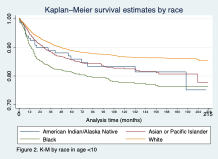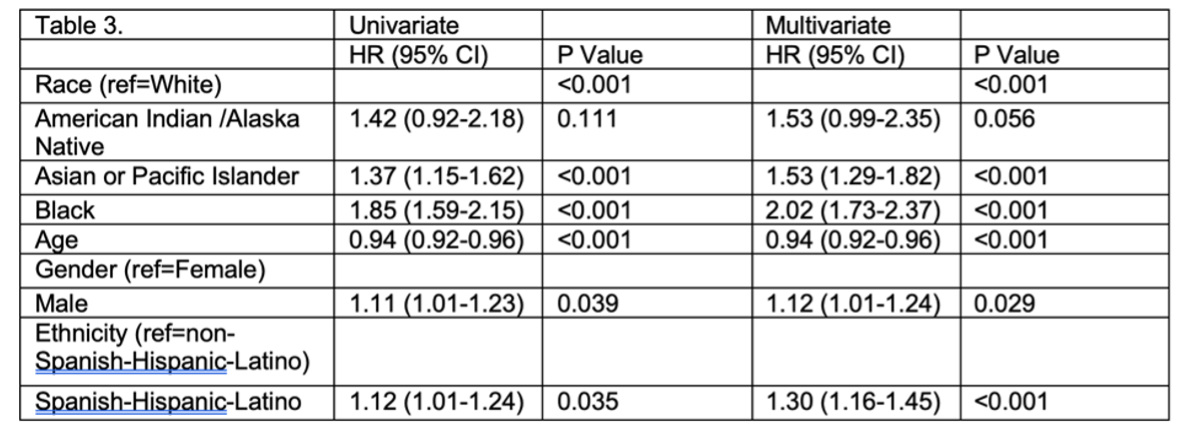Health Equity/Social Determinants of Health
Health Equity/Social Determinants of Health 4
435 - Racial and Ethnic Disparities in Infant and Childhood Leukemia Survival
Publication Number: 435.219

Priya Parikh, MD (she/her/hers)
Chief Fellow, Pediatric Hematology/Oncology
UCSF Benioff Children's Hospital
San Francisco, California, United States
Presenting Author(s)
Background: The Surveillance, Epidemiology and End Results Program (SEER) database has been used to study race related differences in outcomes for childhood cancer. Compared to Children’s Oncology Group (COG) and Children’s Cancer Group (CCG) studies, SEER includes overall a reasonable proportion of racial and ethnic groups. Therefore, utilizing SEER data is critical to understanding disparities in a childhood population.
Objective:
Our aims include 1) determining incidence of leukemia by different racial groups over time, and 2) analyzing outcomes for children < age 10 diagnosed with leukemia by race.
Design/Methods: Variables selected from available SEER version 18 data included the following (raw): patient ID, age, sex, year of diagnosis, race, ethnicity, overall survival (in months), vital status (alive/dead). To accomplish our aims, initial major statistical methods including incidence and descriptives were utilized in Stata version 17. Kaplan-Meier survival estimate curves were run to demonstrate survival time stratified by race. Subsequently, univariate and multivariate Cox proportional hazard models were performed to investigate the predictor variables of race, age, gender, ethnicity to understand effect of mortality (hazard ratios) in different racial groups.
Results: Patients (n=12,694) ages 0-10 years were included. We first described leukemia incidence stratified by race by percentages and frequencies in years 2000-2017 annually. Figure 2 details survival time (in months) by race in all age groups included in this analysis (age < 10 years). This curve demonstrates that White patients have lesser mortality than minority patients by groups listed. Results of univariate and multivariate model are shown in Table 3. In general, we see significance in the majority of predictor variables (with lower p values noted in categories that were previously borderline) and similar or slightly increased hazard ratios in multivariate model compared to univariate models.
Conclusion(s): In cautiously assessing and interpreting results based on these methods, we do see that Black and minority children diagnosed with leukemia will have higher risk of mortality compared to specifically White children. Analysis into root causes of this disparity, including more disease specific metrics, inclusion of genomic factors as well as social determinants of health are necessary to understand better the reason for differential survival in pediatric populations with leukemia by race. Inclusion of all race and ethnicities as a priority in pediatric oncology clinical trials is a first step.

